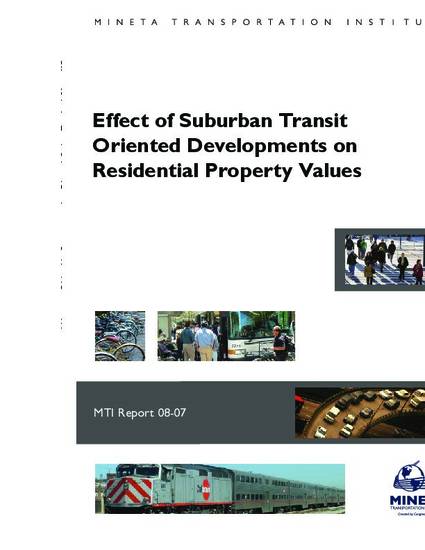
The development of successful TODs often encounters several barriers. These barriers include: a lack of inter-jurisdictional cooperation, auto-oriented design that favors park and ride lot over ridership generating uses, and community opposition. The community opposition may be more vocal in suburban areas where residents of predominately single-family neighborhoods may feel that the proposed high-density, mixed-use TOD will bring noise, air pollution, increased congestion and crime into their area. Community opposition has been instrumental in stopping many TOD projects in the San Francisco Bay Area. While community opposition to TODs has been pronounced, very little empirical research exists that indicates whether this opposition is well-founded. Economic theory suggests that if a TOD has a negative effect on the surrounding residential neighborhoods, then that effect should lower land prices and in turn, the housing prices in these neighborhoods. Similarly, an increase in the housing prices would mean a positive effect of TODs on the surrounding neighborhoods. This study empirically estimates the impact of four San Francisco Bay Area sub-urban TODs on single-family home sale prices. The study finds that the case study suburban TODs either had no impact or had a positive impact on the surrounding single-family home sale prices.
- Transit oriented development,
- Public transit,
- Multiple regression analysis,
- Mixed use development,
- Housing prices
Available at: http://works.bepress.com/shishirmathur/62/
